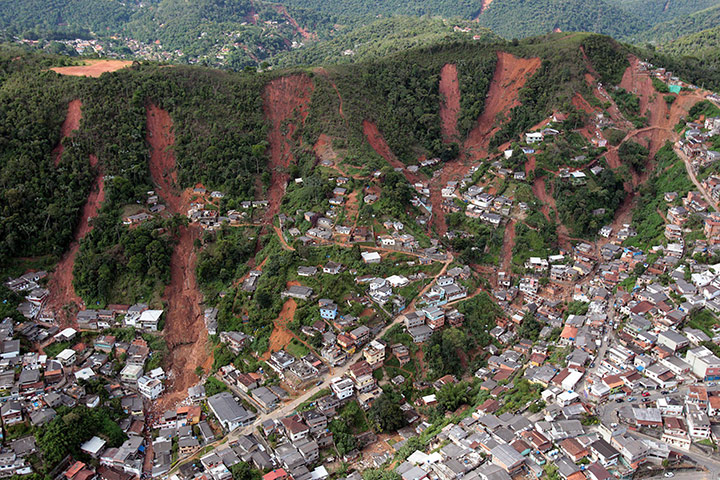Reading on the news about the dramatic landslide-mudflows (picture) that occurred (again) in Petropolis near Rio de Janeiro, with significant fatalities, one thinks could this have been predicted and more so avert it?
Even in an area prone to superficial mudflows and thin landslides, it is very difficult to accurately predict the occurrence of such a landslide. This is for the following principal reasons:
- It is difficult to assess the geotechnical parameters of a superficial material that undergoes continuous drying and wetting cycles.
- The tests are usually performed in saturated samples and in higher effective stresses that are usually present in superficial slides.
- A linear Mohr – Coulomb failure criterion is used when it may be more appropriate to use a power function that defines a curved strength envelope with minimum or even zero effective cohesion in very low to zero confinement (especially for uncemented soils).
- The soil is usually unsaturated with some (or even large) suction which is modified during rainfall infiltration. The pore pressure regime is very difficult to assess without continuous specific monitoring.
- Numerical techniques that can accommodate such complex problems are not widely available and not everybody knows how to use efficiently such models.
- The usual triggering mechanism is intense rainfall which increases the pore pressures in the superficial soil. Since the way water infiltrates in the unsaturated soil, depends mostly on permeability, water content at the time of rainfall, the vegetation cover and the angle of the slope, the problem of evaluating such pore pressures becomes even more difficult.
This problem of predicting mudflows is usually assessed based on prior experience and some statistical evaluation of past mudflows and amount and intensity of rainfall. Can we do better?
